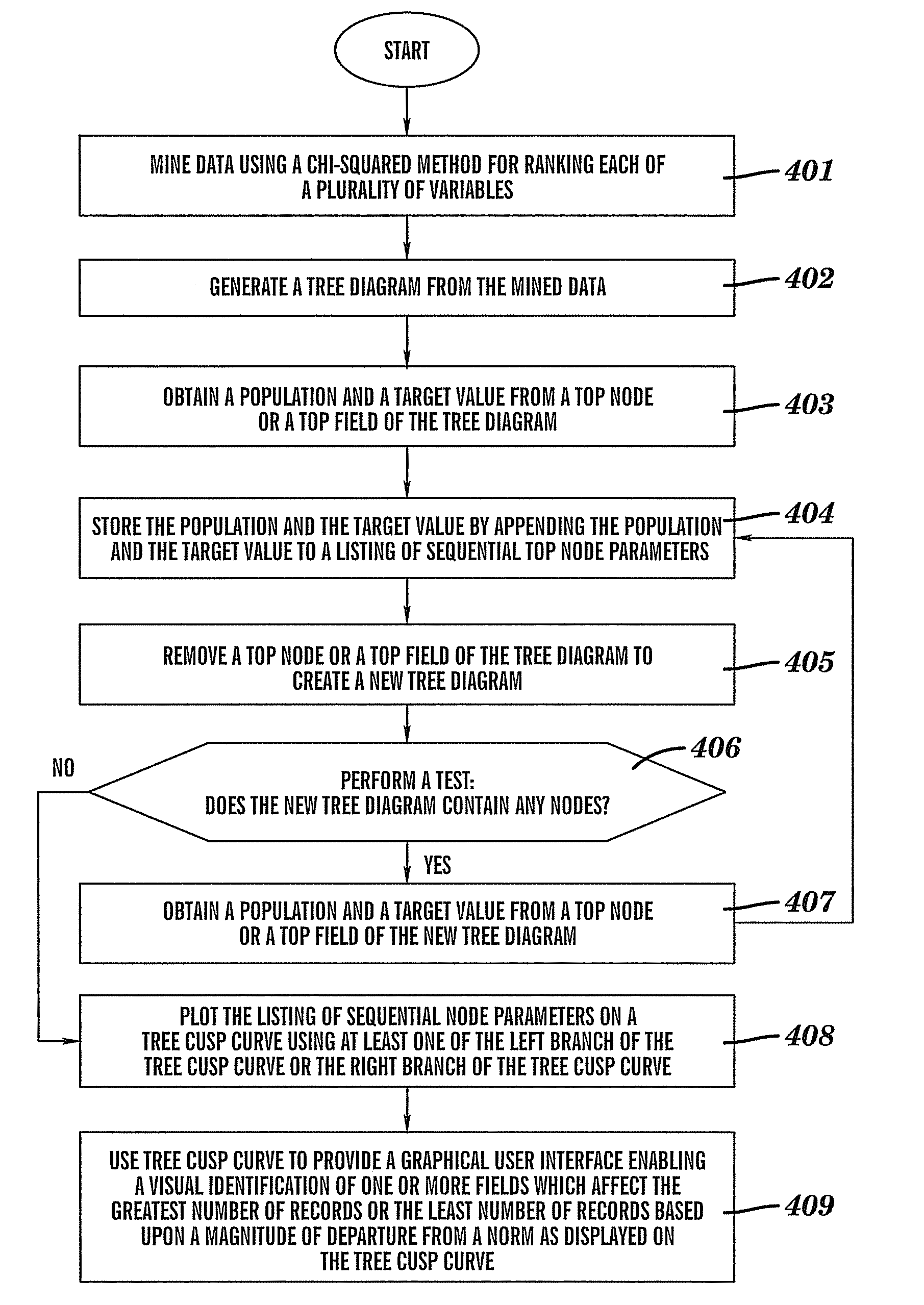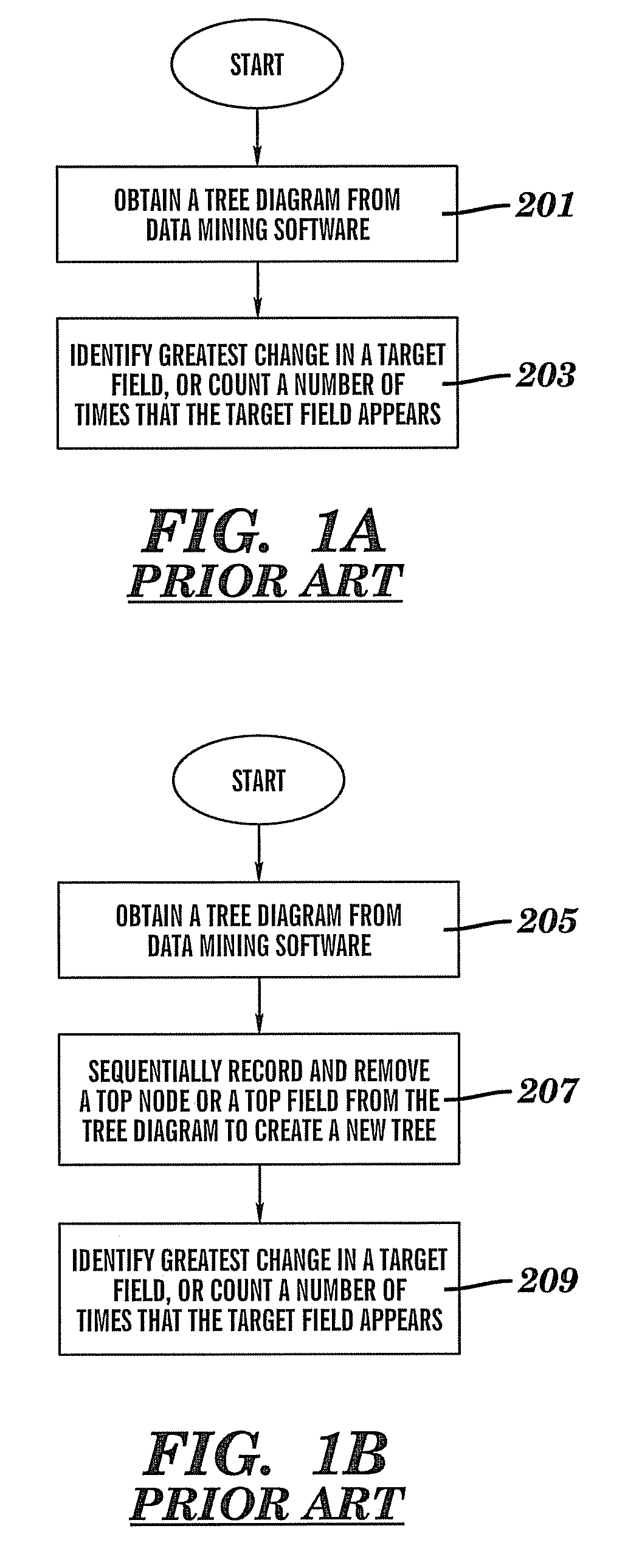Data mining using variable rankings and enhanced visualization methods
a data mining and variable ranking technology, applied in the field of data mining, can solve the problems of insufficient user flexibility for evaluating existing data mining methods, lack of scientific approaches to selecting an appropriate method, and insufficient user flexibility of existing data mining methods
- Summary
- Abstract
- Description
- Claims
- Application Information
AI Technical Summary
Benefits of technology
Problems solved by technology
Method used
Image
Examples
Embodiment Construction
[0029]In the following description, details are set forth to provide an understanding of the invention. In some instances, certain software, circuits, structures and methods have not been described or shown in detail in order not to obscure the invention. The term “data processing system” is used herein to refer to any machine for processing data, including the client / server computer systems and network arrangements described herein. The present invention may be implemented in any computer programming language provided that the operating system of the data processing system provides the facilities that may support the requirements of the present invention. The invention may be implemented with software, firmware, or hardware, or any of various combinations thereof.
[0030]FIGS. 1A and 1B are flow diagrams describing prior art methods for performing data mining using tree diagrams. The procedure of FIG. 1A commences at block 201 where a tree diagram is obtained from data mining softwar...
PUM
 Login to View More
Login to View More Abstract
Description
Claims
Application Information
 Login to View More
Login to View More - R&D
- Intellectual Property
- Life Sciences
- Materials
- Tech Scout
- Unparalleled Data Quality
- Higher Quality Content
- 60% Fewer Hallucinations
Browse by: Latest US Patents, China's latest patents, Technical Efficacy Thesaurus, Application Domain, Technology Topic, Popular Technical Reports.
© 2025 PatSnap. All rights reserved.Legal|Privacy policy|Modern Slavery Act Transparency Statement|Sitemap|About US| Contact US: help@patsnap.com



